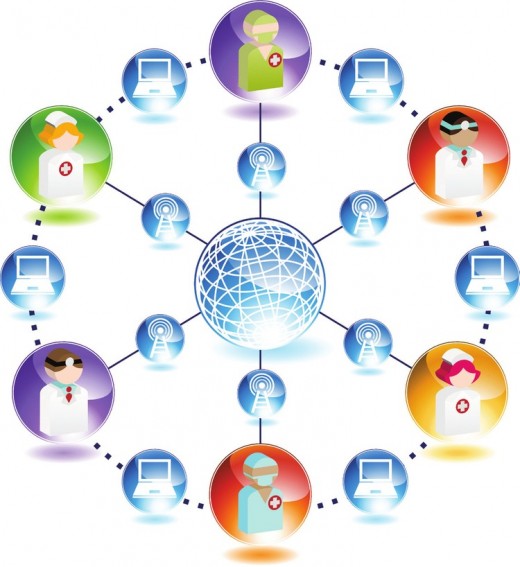Health nonprofits effectively using social media
by COMO Staff
May 27, 2011
As the presence of social media continues to increase as a form of communication, health organizations are searching for the most effective ways to use the online tools to pass important information to the public.
Now, researchers at the University of Missouri have found that nonprofit organizations and community groups appear to be more actively engaged in posting health information and interacting with the public on Twitter than other types of health-related organizations, such as health business corporations, educational institutions and government agencies.
“Twitter may be more appealing to nonprofit organizations because it creates a barrier-free environment that allows these organizations to share important information through real-time exchanges without significant efforts,” said Hyojung Park, a doctoral candidate at the Missouri School of Journalism.

“Unlike business organizations such as pharmaceutical companies, nonprofit health organizations and advocacy groups may suffer from lack of funding, staff and other resources in developing and implementing communication strategies for health intervention and promotion programs,” he said. “Thus, it is likely that nonprofit organizations and support groups recognize the rapid growth of Twitter and its value as an inexpensive but highly effective communication tool.”
In her study, Park explored how health-related organizations use Twitter, which is a popular social media outlet, to promote health literacy in society and raise awareness of their brands and manage their images. The study included a content analysis of 571 tweets from health-related organizations.
Park found that nonprofit health groups do an effective job of incorporating interactive elements into their communication planning.
“Recent studies have shown that most social media users want organizations to be actively involved in social media and to communicate and engage the users directly,” Park said. “Nonprofit health groups do a great job of this, which helps them communicate their health messages and, ultimately, to increase health literacy in the community.”
Park also found that about 30 percent of health tweets were actually republished, or retweeted, by readers who found the information useful or interesting. These retweets result in an even larger audience for the health messages. Park said this shows how dynamic and multidirectional communication on social networking sites such as Twitter hold great potential for health-related organizations to increase the awareness of health literacy, share resources and foster public discussion.
Park hopes future research will shed even more insight into how health organizations can effectively communicate their messages.
This study was published in the Journal of Health Communication and was supported by the Health Communication Research Center at the Missouri School of Journalism. The study was co-authored by Shelly Rodgers, associate professor in the Missouri School of Journalism, and Jon Stemmle, associate director of the Health Communication Research Center.
Now, researchers at the University of Missouri have found that nonprofit organizations and community groups appear to be more actively engaged in posting health information and interacting with the public on Twitter than other types of health-related organizations, such as health business corporations, educational institutions and government agencies.
“Twitter may be more appealing to nonprofit organizations because it creates a barrier-free environment that allows these organizations to share important information through real-time exchanges without significant efforts,” said Hyojung Park, a doctoral candidate at the Missouri School of Journalism.

“Unlike business organizations such as pharmaceutical companies, nonprofit health organizations and advocacy groups may suffer from lack of funding, staff and other resources in developing and implementing communication strategies for health intervention and promotion programs,” he said. “Thus, it is likely that nonprofit organizations and support groups recognize the rapid growth of Twitter and its value as an inexpensive but highly effective communication tool.”
In her study, Park explored how health-related organizations use Twitter, which is a popular social media outlet, to promote health literacy in society and raise awareness of their brands and manage their images. The study included a content analysis of 571 tweets from health-related organizations.
Park found that nonprofit health groups do an effective job of incorporating interactive elements into their communication planning.
“Recent studies have shown that most social media users want organizations to be actively involved in social media and to communicate and engage the users directly,” Park said. “Nonprofit health groups do a great job of this, which helps them communicate their health messages and, ultimately, to increase health literacy in the community.”
Park also found that about 30 percent of health tweets were actually republished, or retweeted, by readers who found the information useful or interesting. These retweets result in an even larger audience for the health messages. Park said this shows how dynamic and multidirectional communication on social networking sites such as Twitter hold great potential for health-related organizations to increase the awareness of health literacy, share resources and foster public discussion.
Park hopes future research will shed even more insight into how health organizations can effectively communicate their messages.
This study was published in the Journal of Health Communication and was supported by the Health Communication Research Center at the Missouri School of Journalism. The study was co-authored by Shelly Rodgers, associate professor in the Missouri School of Journalism, and Jon Stemmle, associate director of the Health Communication Research Center.
What's Your Reaction?
Excited
0
Happy
0
Love
0
Not Sure
0
Silly
0


